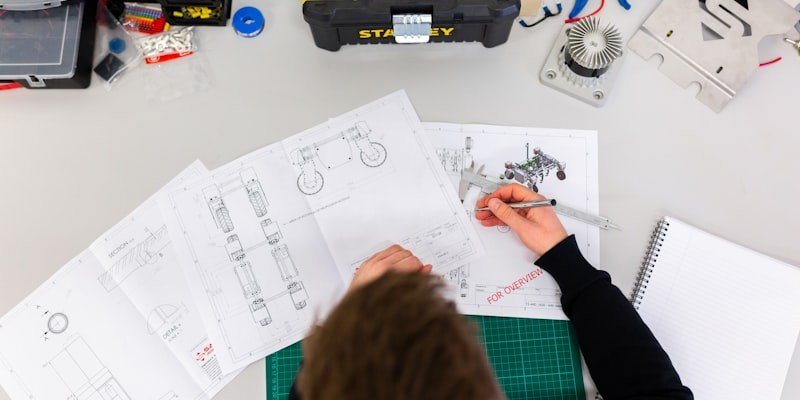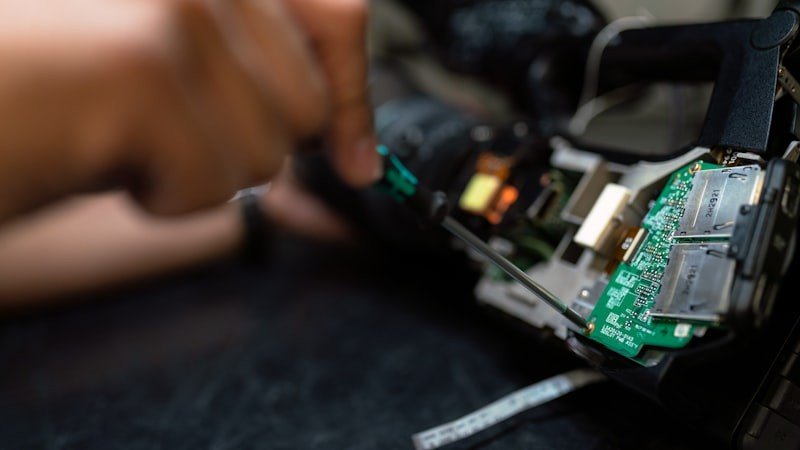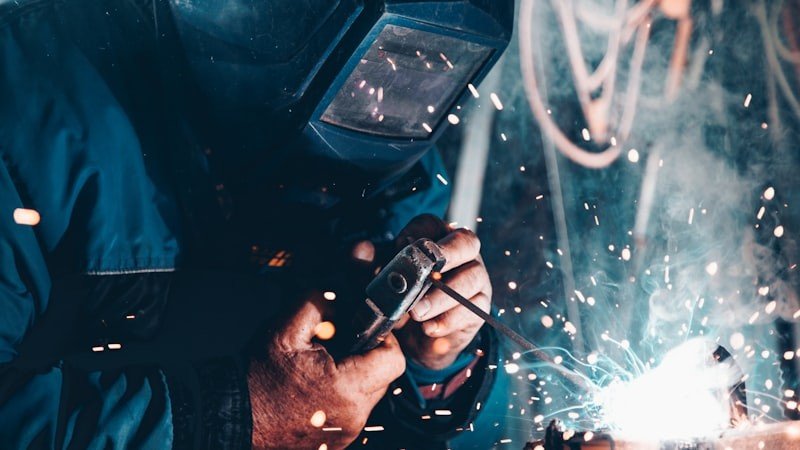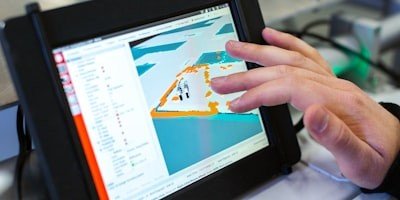
Top Entry Ball Valve vs Side Entry: Which is Right for Your Needs?
Choosing between top entry ball valves and side entry ball valves quickly becomes a question of maintenance philosophy, emissions risk, and lifecycle economics. Both move the same way with a simple quarter-turn mechanism and can deliver tight shutoff. In a top entry ball valve vs. side entry scenario, you’re really comparing not only the mechanism but also the underlying design structure that dictates maintenance access, sealing ability, and overall cost comparison. If you care about uptime, leak paths, and how your crew will reach internals five years from now, the construction choice matters a lot.
How Top Entry Ball Valve vs Side Entry constructions differ
Top entry ball valves use a single-piece body with a removable bonnet. The ball, seats, and stem are installed and removed vertically through that bonnet. That monolithic body takes more forging or welding, more precision, and requires a high-integrity bonnet seal with excellent sealing ability. It is heavier for a given size class and is typically built to handle significant pipe stress.
Side entry ball valves split the body horizontally or at the ends. Two-piece units unbolt at a body joint; three-piece units include a swing-out center section. Internal components are accessed from the side after the body is opened or the center section is removed. Casting and machining are simpler, and the initial price is attractive. Their design structure and mechanism may not offer the same inline access benefits as the top entry, but they still serve well in many applications.
Both styles can be floating or trunnion-mounted. Both can be soft-seated or metal-seated, actuated or manual. The entry style selects how you’ll build and maintain the valve, not the fundamental flow characteristic.
Maintenance access and downtime
Maintenance is where the two architectures part ways.
Top entry design favors in-line servicing. Once isolated and depressurized, a technician lifts the bonnet and pulls the ball and seats straight out. No pipe breaks. No flange rework. In a plant or offshore module with tight decks and live utilities, that single vertical opening saves time, permits smaller crews, and avoids crane choreography. This is particularly important when considering a cost comparison between the two designs.
A typical in-line service on a top entry ball valve looks like this:
- Isolate upstream and downstream, depressurize, drain or purge.
- Lock out the actuator and remove it if required.
- Unbolt the bonnet, attach a hoist, and lift clear.
- Remove the ball and seats as a cartridge or individual pieces.
- Inspect, replace seats and seals, renew stem packing if needed.
- Reassemble, torque in sequence, pressure test per API 598 or 6D.
Side entry ball valves need body separation or removal from the line. That introduces more steps and more downtime. Two-piece bodies often require dropping the entire valve if welded in place. Three-piece swing-out designs help, but you still loosen tie-bolts, support the center section, and swing it free. Expect more rigging, more gaskets, and a full isolation plan across multiple flanges.
Projects regularly report maintenance time dropping from days to hours when switching from side entry ball valves to top entry ball valves on large bores. That time delta scales fast when production value is high or when access requires ROVs or divers.

Professional valve maintenance and assembly procedures
Sealing, emissions, and leak paths
Leak paths live at joints. Top entry ball valves have one major pressure boundary joint at the bonnet, plus stem packing. No split-body flange. Fewer studs to watch. That compact boundary and high sealing ability make fugitive emission control easier, especially with graphite packing and engineered seat designs.
Side entry ball valves add body joints and cover plates to the stem packing and end connections. Each joint is a potential emission source. Well-built split-body valves can meet modern emission standards, but more bolted interfaces mean more places to inspect, torque, and renew.
For plants tracking LDAR performance, the structural simplicity of a top entry ball valve removes a category of recurring leaks. That also shortens repair cycles, because seat or seal replacement does not reopen long pipe runs.
Pressure, temperature, and size envelope
One-piece bodies shine at high pressure and large size. It is common to see top entry ball valves, renowned for their robust design structure, in Class 150 to 250 service on pipelines and manifolds. The continuous pressure boundary handles bending from misalignment and thermal growth better than a split shell of similar weight.
Side entry ball valves can also reach high classes, particularly in trunnion-mounted configurations, but the body split sets mechanical limits. For general plant duties and utility service through Class 600 and moderate sizes, side entry ball valves hold a massive installed base and perform well.
Temperature range and temperature tolerance depend on seats and materials, not the entry style. PTFE, RPTFE, and PEEK cover a wide swath of cold to moderate service. Metal seats extend that range into hot steam and abrasive slurries. Both styles can be built cryogenic with extended bonnets. Top entry metal-seated designs are frequently specified for severe heat and cycling because the seat geometry and preload schemes can be serviced and verified in place.
Materials and seat technology
Material selection follows the process, not the entry path:
- Bodies and bonnets: carbon steel (A105), stainless (316/CF8M), duplex and super duplex, nickel alloys where chloride stress or sour service demands it.
- Seats and seals: PTFE family for low friction and excellent sealing ability, PEEK for higher pressure and temperature with good chemical resistance, elastomers for specific chemistries, and hard-coated metal for temperature extremes or solids.
Top entry ball valves in aggressive services often arrive in duplex or high-nickel alloys with metal seats and graphite packings. Side entry ball valves dominate common carbon and stainless applications, with soft seats that seal reliably at lower torque.
Cost, weight, and footprint
Top entry ball valves carry a higher initial cost. One-piece bodies start with larger forgings or complex weldments. Machining tolerances at the bonnet interface are tight. The bonnet and cover hardware add mass and height. However, you gain a path to lower lifecycle cost: fewer leaks, shorter outages, and faster seat changes. This cost comparison can become critical when evaluating long-term maintenance budgets.
Side entry ball valves keep the capital outlay lower. Off-the-shelf two-piece bodies are economical in small to mid sizes. Three-piece bodies provide flexibility for maintenance with less cost than a top entry ball valve of similar rating. Lifecycle costs rise when you factor in disassembly time, crane or rigging hours, and the larger set of gaskets and studs that age with the valve.
Space planning differs:
- Top entry ball valves need vertical clearance for bonnet removal and a hoist point.
- Side entry ball valves need horizontal clearance to swing out the center or remove the body and enough walk-down space to pull studs and covers.
Weight varies. A monolithic top entry ball valve can be heavy, especially in high classes with welded ends. Three-piece bodies sometimes weigh more in aggregate once flanges, covers, and bolting are counted. Always check the datasheet against your pipe support strategy.

Modern industrial facility with comprehensive valve systems
Safety during service
Top entry service reduces the number of open piping joints. With a single vertical opening and a depressurized cavity, the risk envelope is smaller. Technicians still need to use a hoist, confirm zero energy, and wear the right PPE. Bonnet studs should be torqued in sequence, and lifting lugs rated and inspected.
Side entry service expands the work zone. Open flanges, multiple gaskets, and suspended loads introduce more hazards and more permits. If the valve sits offshore or in subsea systems, the task also includes ROV tooling or diver intervention.
Side-by-side comparison
| Attribute | Top entry ball valve | Side entry ball valve |
|---|---|---|
| Body construction | One-piece body with a bolted bonnet | Two-piece or three-piece split body |
| Access to internals | Vertical, in-line through bonnet | Horizontal, requires body split or removal |
| Leak paths | Fewer joints and studs to manage | More bolted joints and gaskets |
| Typical pressure classes | Common in Class 150 to 250, very large bores | Broad coverage to Class 600, trunnion designs reach higher |
| Temperature capability and tolerance | Wide, especially with metal seats and graphite packing | Wide with the right seats, often soft-seated in general service |
| Downtime for service | Hours for in-line rebuilds | Often a day or more for removal, reassembly, and testing |
| Space requirement | Vertical clearance for bonnet and hoist | Horizontal clearance for swing-out or full removal |
| Initial cost | Higher | Lower |
| Lifecycle cost | Often lower where uptime and emissions matter | Often higher if maintenance access is difficult |
| Common uses | Pipelines, offshore, severe chemical, power | Utilities, general plant isolation, small to mid sizes |
Where top entry shines
Top entry ball valves have a strong record in large, hazardous, or access-limited settings.
- Oil and gas pipelines and manifolds. Welded ends, high classes, and strict emission control reward the one-piece body. Inline service keeps pigging and compression stations available.
- Offshore platforms and subsea systems. Limited deck space, hoist constraints, and ROV limits favor a vertical service path. Projects have reported service windows falling from days to single-digit hours.
- Chemical and petrochemical units handling toxic or corrosive media. Fewer emission points and in-place seat replacement meet both safety and compliance goals. Metal seats and exotic alloys hold up to tough fluids.
- Power plants with hot steam or high-pressure feedwater. Metal-seated top entry ball valves handle heat, deliver tight shutoff, and can be overhauled during a short outage.
- Large water distribution, desalination, and water treatment facilities benefit from the inline maintenance approach that avoids draining extensive pipeline networks.
When a side entry design is the smart pick
Side entry ball valves remain the go-to for a huge slice of plant service.
- Utilities and non-hazardous services.
- Small sizes where removal is quick and replacements sit on the shelf.
- Projects with tight capital budgets and relaxed downtime constraints.
- Applications where flange access is easy and rigging is simple.
Three-piece swing-out bodies add a practical middle ground. You keep the price advantage and still gain accessible internals without removing the full valve.
Flow control and trim options
Both entry styles are quarter-turn balls with similar inherent flow curves. Control resolution depends on trim shape and actuator quality, not the body style. V-port balls, equal-percentage trims, and positioners can be specified on either construction. In practice, most top entry ball valves for pipelines are on-off isolation valves, while side entry ball valves appear more often in modulating service in utility and process loops. That is a pattern, not a restriction.
Seat and seal choices drive performance:
- Soft seats (PTFE, RPTFE) for low friction and clean sealing at moderate temperature.
- PEEK seats for higher pressure and temperature with good chemical resistance.
- Metal seats with hard coatings for heat, solids, and abrasive or flashing service.
- Graphite packing for fire-safe compliance and thermal endurance.
Maintenance procedures at a glance
| Maintenance factor | Top entry | Side entry |
|---|---|---|
| Disassembly | Remove bonnet and lift out trim in line | Split body or remove valve from pipe |
| Typical tools | Hoist, torque wrench, standard hand tools | Rigging gear, flange tools, hoist or crane |
| Gaskets to renew | Bonnet gasket and stem packing | Body gaskets, end gaskets, packing, possible stud replacement |
| Isolation scope | Upstream and downstream of the valve | Upstream, downstream, and all opened flanges |
| Test after rebuild | Shell and seat per API 598 or 6D, often in place | Shell and seat after reassembly, usually on a bench or in place after install |
| Crew size | Smaller teams often sufficient | Larger crews or specialized riggers, especially on large bores |
Care pays off either way. Bolt torque sequence, cleanliness of seating surfaces, and correct orientation of the ball and seats sound basic, yet they protect new seals and shorten retest time. For actuated units, stroke checks and torque signatures can catch rising friction before it becomes a downtime event.

Pipeline valve system installation and configuration
Sizing, torques, and actuation
Trunnion-mounted balls reduce operating torque on larger sizes by supporting the ball at both ends and using spring-loaded seats. That lowers actuator size and reduces wear. Floating balls are common in small to medium bores and in lower classes. Either entry style can be trunnion or floating; most top entry ball valves in pipelines are trunnion by default.
Actuation choices are similar across both styles:
- Manual gear operators on large diameters or high classes.
- Pneumatic or hydraulic actuators for quick operation and safety instrumented functions.
- Electric actuators for precise positioning or remote areas without instrument air.
When actuators mount on a top entry ball valve, confirm bonnet clearance still allows removal with the actuator off. On a side entry ball valve, check that linkages and tubing leave room for tie-bolt access.
Standards and compliance
Selection usually aligns with a set of standards and site specs. Typical references include:
- API 6D for pipeline valves.
- API 607 or 6FA for fire testing.
- ISO 15848 for fugitive emissions.
- NACE MR0175/ISO 15156 for sour service.
- ASME B16.34 for pressure temperature ratings.
- MSS SP standards for dimensions and testing.
Top entry ball valves with fewer joints tend to pass fugitive emission audits with a margin, particularly when paired with low-emission packing and live-loading. Side entry ball valves can meet the same marks with strong assembly practices and diligent monitoring.
Environmental and ESG implications
Fewer leak points reduce volatile organic compound releases and simplify LDAR routes. Inline service also avoids breaking more gaskets and studs, cutting waste. Both styles are steel-heavy and fully recyclable. A top entry forging may carry a higher embodied energy per valve, yet its operating profile often yields lower emissions across the service life in hazardous duties.
Practical selection tips
Use the following checklist during specification and vendor reviews:
- What is the true cost of downtime on this line per hour?
- Will maintenance access be vertical-only or obstructed by floors, cable trays, or overhead equipment?
- How many bolted joints do you want to manage in LDAR and turnarounds?
- Are you planning welded ends for emissions and integrity, or flanges for flexibility?
- What is the pressure class, temperature range, and solids content? Do you need metal seats considering the required temperature tolerance?
- What alloy and corrosion allowance meet the chemistry and expected life?
- How will the actuator be mounted, and can you service the valve without removing surrounding equipment?
- What are the test requirements on site, and can the valve be tested in place after rebuild?
- What spares will you stock: complete replacement valves, or rebuild kits with seats and bonnet gaskets?
- What are the lifting points and clearances for safe, repeatable maintenance?
A final sanity check: if a valve sits in a spot you never want to rebuild during a shutdown, and you can budget for it, a top entry design is usually the right call. If the line is low risk, easy to isolate, and a spare sits on the shelf, side entry ball valves can save money and still perform well.
By considering these factors and understanding the differences between top entry ball valves and side entry ball valves—especially their design structure, sealing ability, and temperature tolerance—you can make an informed decision that balances maintenance access, cost comparison, and long-term reliability.
Get Expert Valve Consultation
Need help selecting the right ball valve for your application? Our engineering team is here to assist.
Related Products

Floating Ball Valves
Cost-effective solution for low to medium pressure applications with simple construction and reliable sealing performance.
View Product
Trunnion Ball Valves
Heavy-duty design for high-pressure service with reduced operating torque and extended service life in demanding applications.
View Product
Metal Seated Ball Valves
Engineered for extreme temperatures, abrasive media, and fire-safe applications with superior durability and leak-tight performance.
View Product